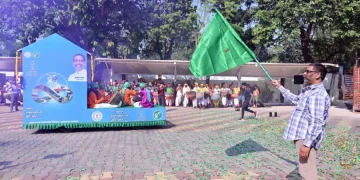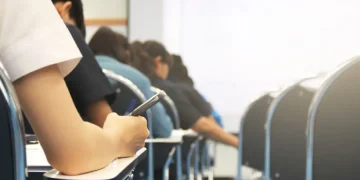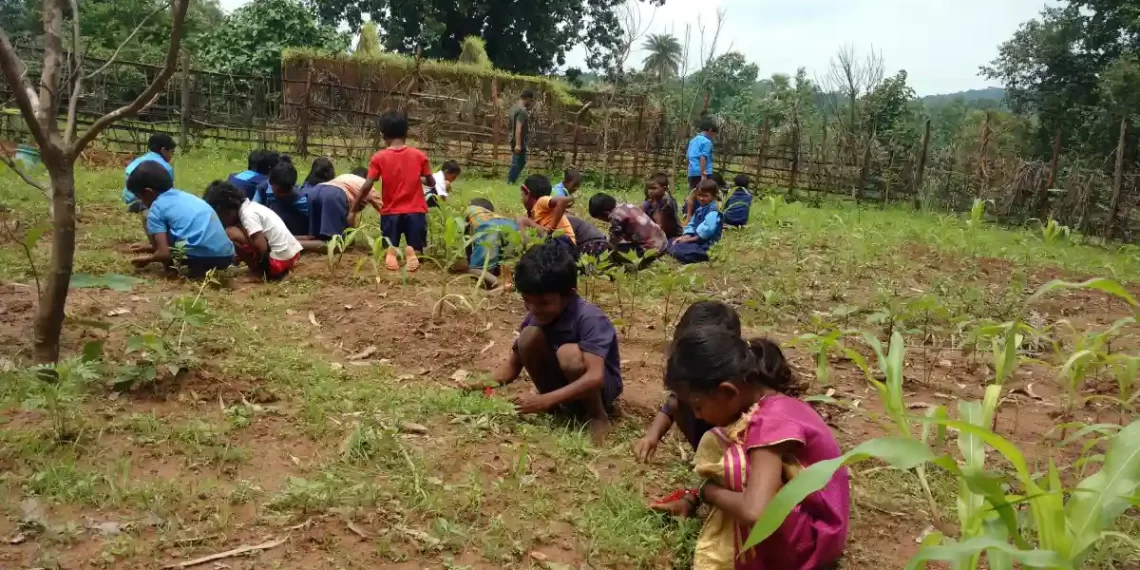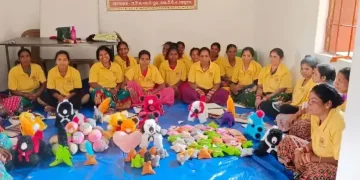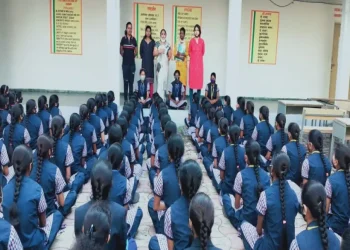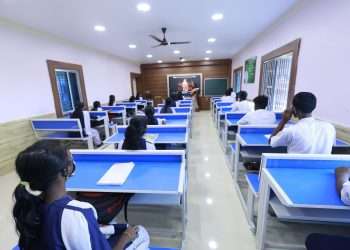Chandaner
For educationist Pranith Simha, who runs his social organisation Bachpan Banao which works on children’s education, his experience of working in government schools helped him start his dream project ‘Sapno ki Shala’ in this Maoist-impacted tribal district in Bastar Division.
“Initially, I was associated with Porta cabin schools but moved out of them. When I worked in these residential schools, I realised that they were a part of temporary arrangement for children in response to violence. In Sukma, Bijapur and Dantewada, there are about 35,000 students studying in porta cabin schools who have been displaced from their homes,” he said.
Simha felt that the most important thing is the need to strengthen village level primary schools. At Sapno ki Shala, tribal students are educated differently, with an emphasis on various types of activities. The educationist believes that the regular school structure is not relevant for tribal children.
“Adivasi children grow up without restrictions. So, normal schools with strict discipline do not work the best for them. In the context of Bastar, poverty is not the main issue behind the high school dropout rate. There are other reasons like the language barrier. Chhattisgarh’s government schools follow Hindi as the teaching medium but Adivasi children either speak Halbi or Gondi at home,” he told The Indian Tribal.
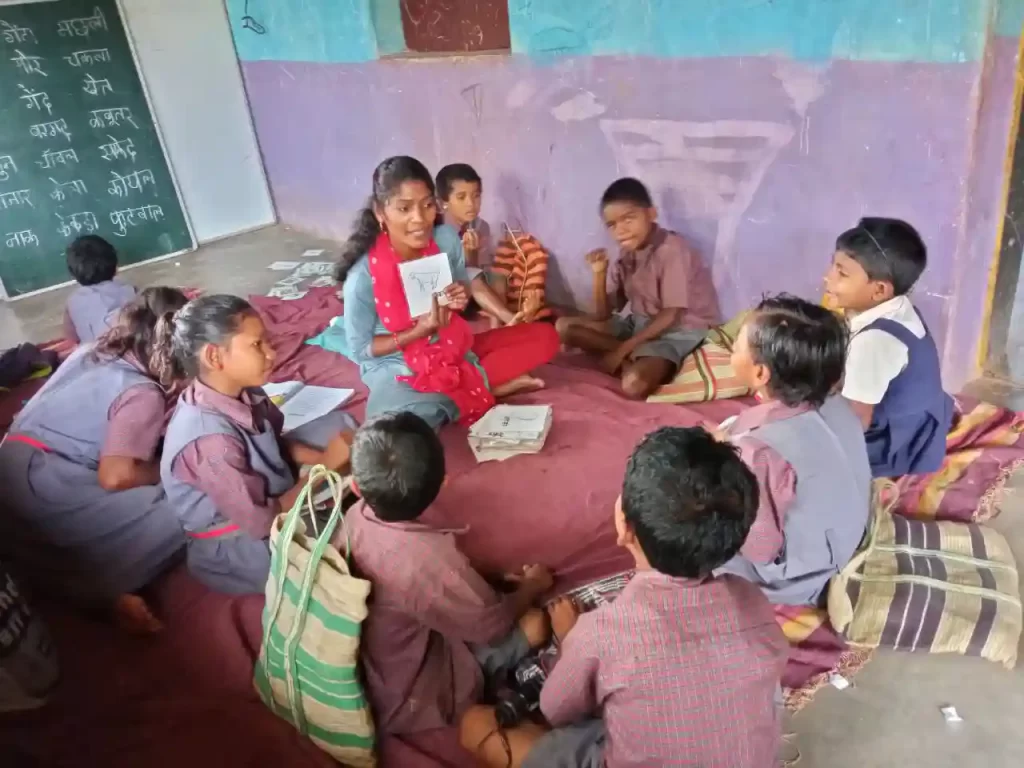
“As there is no healthy interaction between teachers and students due to the language issue, the latter lag behind in lessons. Many of them are first generation learners and it is a huge struggle for them,” Simha claimed.
Simha also feels that the syllabus is delinked from the Adivasi cultural identity. Usually, when alphabets are taught in English, it is A for apple and B for ball. But in reality many Adivasi students are not familiar with apple in the Bastar region. “In cities, children know about these things. But apple is outside the context in Bastar. This makes life complicated for them,” Simha said.
He recalled that once while explaining about computer to Class 5 students, he said one can book train tickets using it, but many found it difficult to understand.
The atmosphere in Sapno ki Shala is different. The school does not follow the annual timetable followed by schools across India. Rather, it takes into account tribal festivals like Amus and livelihood needs like sowing, harvesting and the mahua collection season when entire families, including children, collect the flowers throughout the day.
The small sweet-smelling flower is an important minor forest produce and fetches a handsome price in the market. In Adivasi areas, every member of the family works on the land. So, due to these reasons, many students don’t come to school for days.
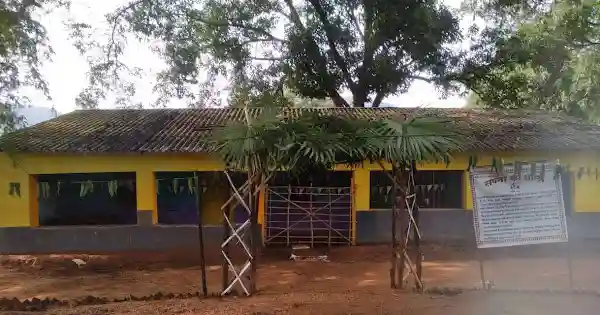
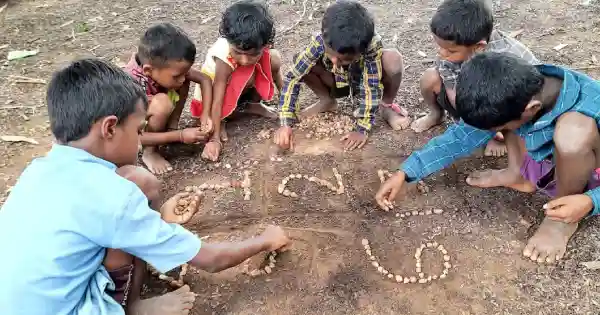
Simha pointed out that every Wednesday there is low attendance as children skips classes for rural haat bazaars. At Sapno ki Shala the effort is to understand these issues and try to integrate the modern education system while retaining tribal values.
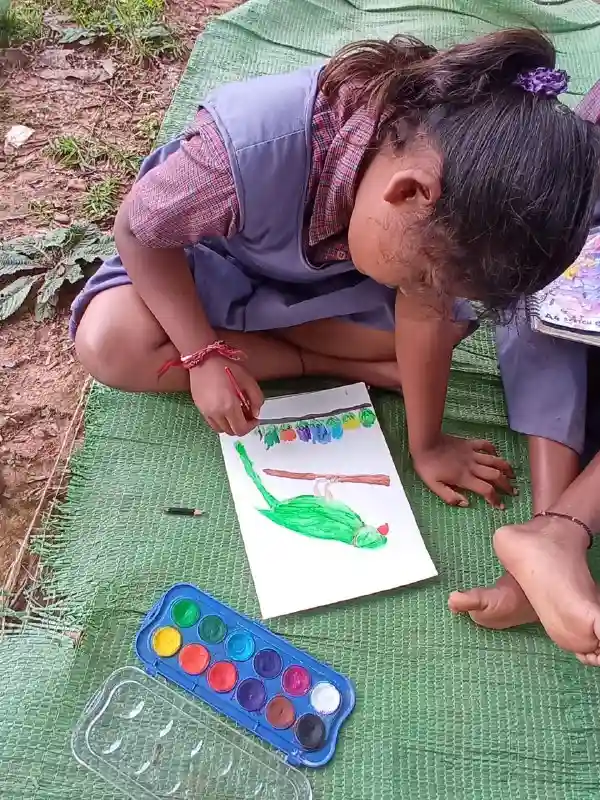
At present, the school is run in the community building with the local people fully cooperating in the effort. There are 40 children and classes are run from 1 to 7. It is under the State government curriculum. The school has four full-time and three part-time teachers. A potter comes from the village to teach children his craft.
Lokesh Kunjam, a teacher at Sapno ki Shala, joined in 2018. He teaches science and environment. “We start with the assembly which is an hour long event. It is not a normal one with only prayers. Children take turns to sing, narrate stories and some even showcase their acting skills. There was also an experimentation with children choosing their teachers in an effort to do something different,” Lokesh said.
Kunjam said teachers usually plan lessons on Saturday where they carry out weekly planning. They always do not sit inside classes. He uses stones to teach children single digits.
The concept of children’s parliament has also been introduced as part of which children decide what to do when a fight breaks out and how to intervene in important matters related to the school like toilets. Teachers make an effort to be equal with children. If students sit on the floor, the teachers do the same.







